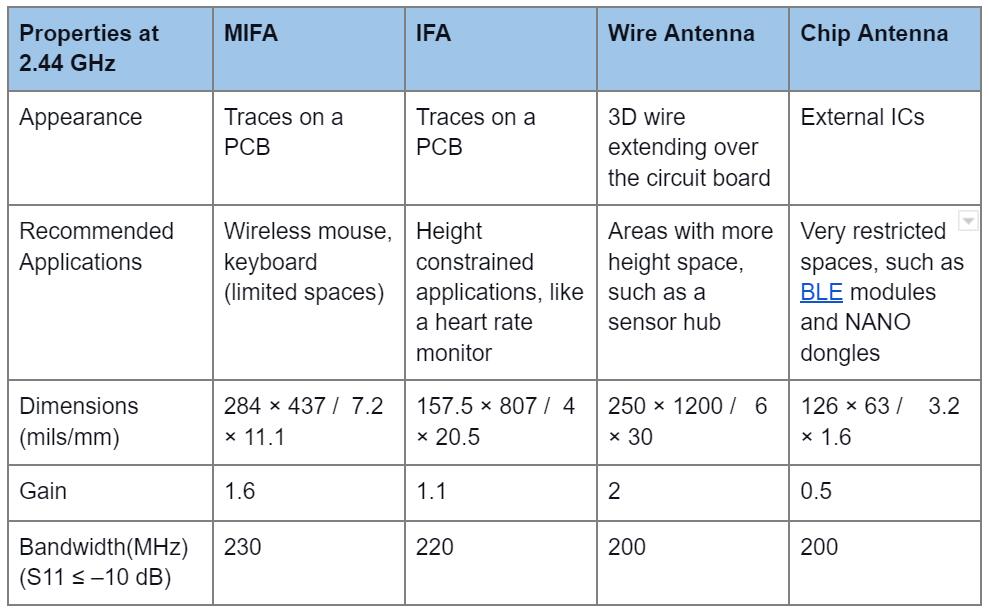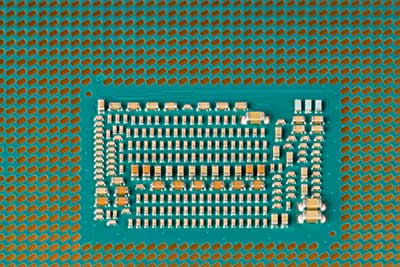Wireless devices are becoming the norm for most applications, so there is a high demand for PCB antennas to enable seamless communication. Think of simple devices like wireless mice to the emerging 5G network and IoT. These require wireless communication, and a PCB antenna will be instrumental in their development.
If you are working on a project involving wireless connectivity, here is a close look at PCB antennas, including their types and how to design one. Let's dive in!
Contents
Types of Antenna
The following are the three antenna types.
Wire Antennas
A wire antenna is essentially a cable that extends above the PCB in free space. It gives the best range and performance due to its 3D exposure and dimensions.
PCB Antenna
Also known as a PCB trace antenna, this PCB antenna type is as simple as a trace drawn on the circuit board.
Compared to the wire antenna, the PCB antenna type is 2D because it lies in the same place as the circuit board.
Chip Antenna
A chip antenna comes as a compact form-factor IC with a packed conductor inside. The compact size chip still provides a wireless range acceptable for BLE antenna designs.
Antenna Comparison
Since IFA and MIFA are the most common PCB trace antennas, we will compare them with the chip and wire antenna.

Special Offer: Get $100 off your order!
Email [email protected] to get started!
Antenna Parameters
The following are the vital performance parameters for antennas.
Return Loss
Return loss indicates how well the antenna matches the 50-Ω transmission line. The characteristic impedance of the transmission line is usually 50 Ω. But it could be different. However, 50 Ω is the industry standard for testing equipment and commercial antennas.
Bandwidth
Bandwidth defines the antenna's frequency response. It indicates how well the antenna matches the 50-Ω transmission line across the entire band of interest, usually 2.40 GHz to 2.48 GHz for BLE applications.
A wider bandwidth is better because it reduces detuning effects coming from environmental changes surrounding the antenna.
Radiation Efficiency
Some of the non-reflected power becomes thermal loss and gets dissipated as heat. This loss occurs due to conductor losses in the copper traces and dielectric losses in the FR4 substrate. The dissipated heat determines the radiation efficiency, whereby 100% radiation efficiency implies all non-reflected power gets dissipated into free space.
Radiation Pattern
The radiation pattern shows which directions experience more radiation and which ones experience less. This directional property helps orient the antenna optimally for its application.
For instance, isotropic dipole antennas radiate equally on all sides, making them ideal for omnidirectional antenna applications. However, most antennas have a specific direction where the RF frequency signal is more powerful. A PCB antenna operates similarly and can work well as a directional antenna.
Gain
Compared to the isotropic antenna that radiates in all directions uniformly, gain refers to the radiation on a particular side (direction of interest). dBi expresses the gain parameter by showing how strong its radiation field is relative to an ideal isotropic antenna.
How to Design a PCB Antenna
Before designing a PCB trace antenna, consider the following factors to make the design flawless.
Design Considerations
Choose the Best Type of Antenna
There are different antenna designs, with the most common ones being meandering and F-type. The standard F-type has the best trade-off between efficiency, size, and omnidirectional performance. On the other hand, meandering traces are more compact but lag in performance.
Consider the PCB Construction
A copper PCB trace length determines its resonant frequency, and the higher the frequency, the shorter the trace. Each antenna needs an area around the antenna trace with no ground fill or copper traces on any PCB layer (keep-out area). Also, wide traces give a wide bandwidth, and they can be covered using a solder mask or gold flashed. Lastly, the antenna's electrical signal performance will depend on the dielectric constant, thickness, and substrate material.
Ground Planes Are Critical
PCB antennas need a ground plane to be effective. The ground plane's size and shape will affect the antenna's performance and impedance. Therefore, it should have vias along the antenna's keep-out area edge.
Include Matching Components
Mismatched antennas can reduce range performance and the RF link budget. Therefore, you should place a pi-network at the antenna's feed point to avoid mismatch losses.
Impedance Matching
Besides the components, ensure the antenna and source impedance match (50 Ω) for maximum RF power transfer. Try to keep the return loss at less than or equal to -10dB
Consider the Antenna's Surrounding Environment
Metal components, enclosures, and other components can affect the radiation pattern and tuning. Therefore, ensure to keep the antenna away from metal objects, metalized plastic, or metallic enclosures.
Tune the Design for Specific Applications
Lastly, remember to tune the dimensions, matching, etc., for specific applications. Copying existing designs is not good enough because radiation patterns and gain changes as the surrounding area parameters change.
Calculations
Before going into the calculations, set these parameters straight. Select the operating frequency and substrate, then calculate the trace and substrate's length and width.
Assuming the substrate material is FR4, it has a relative permeability of 4.4.
We can calculate the substrate height using the following formula.
- Hs is the substrate height
- F is the frequency (GHz)
- C is the light velocity (m/s)
- Σr is the substrate's dielectric constant
As for the trace width, you can get it using the following formula:
To get the trace length, use:
In this equation, Σff is the effective permittivity.
On the other hand, ΔL is the physical length.
Calculate the substrate length using:
For the width, use the following formula:
The last calculation involves getting the microstrip's width to depth ratio. Calculate this value using the following formula.
Here, d is the RF trace width, w is the substrate width, and A is the effective area.
We will design a 2.45 GHz RF board using the ESP8255 system-on-chip (SOC) with these calculations.
Board and Antenna Layouts
There are two sections to consider on the circuit board. These are the antenna and crystal oscillator sections, but we will focus on the antenna section.
Design Steps
After placing the headers and connectors, fit in the U.FL connector, switch, antenna, GPIO0 switch, and microcontroller. After that, fix the antenna trace and keep in mind the trace impedance should be 50Ω. The copper trace acts as a high-frequency transmission line, and the impedance value relies heavily on the board thickness and dielectric material.
Therefore, you should calculate that first, then plot the trace. You can use the impedance calculator tool to simplify your calculations.
Next, calculate the trace width. Using a trace width of 70 mils, trace thickness of 1.4 mils, dielectric (board thickness) of 39.3701, and a relative dielectric constant of 4.5, we get 50 as the trace impedance.
It is vital to note that the relative dielectric constant value varies depending on the manufacturer. As for the impedance, it usually depends on the dielectric thickness and trace width.
After implementing the above calculations, design the trace routing and take it to manufacture, programming, then testing.
Types of Antenna Printed Circuit Boards
- Yagi antenna PCB
- Wheels antenna PCB
- Quadcopter antenna PCB
- Log period antenna PCB
- Flex PCB antenna
- Generic MMIC antenna PCB
- Patch arrays antenna PCB
- UWB antenna (Ultra Wide Band) PCB
- Custom antenna PCB
SIM card holder as part of GSM communicator with antenna
Summary
There you have it! PCB antennas are vital for modern applications, and the above design should make it easier to build one for your project. Remember to adhere to the design considerations and tune the final design to suit the specific project. If you have any questions, comments, or suggestions, don't hesitate to reach out.
Special Offer: Get $100 off your order!
Email [email protected] to get started!








